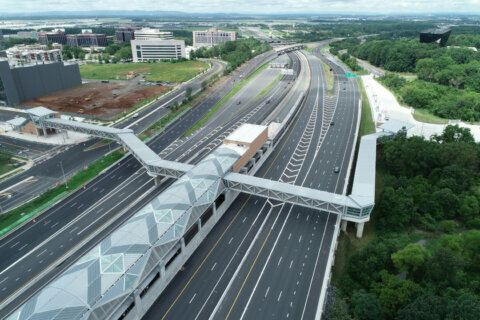This article was reprinted with permission from Virginia Mercury.
Virginia is considering adding 12 more plants to its noxious weeds list, a compilation of species that are banned from use in the state because of the damage they provide to ecosystems.
On Thursday, the Board of Agriculture and Consumer Services held a public hearing on the proposed additions. No one spoke during it, but one comment was submitted via the state’s online regulatory Town Hall website from Chesapeake resident Rogard Ross, who said he “strongly agrees” with the additions.
“You should also add English Ivy, Japanese Stilt Grass, and Linden Viburnum,” wrote Ross. “These are all terribly invasive plants in our local parks in Chesapeake, Virginia.”
The public comment period is scheduled to end Friday, Dec. 8.
The plants proposed to be added to the list are:
- Two-horned trapa
- Garlic mustard
- Chinese yam
- Autumn olive
- Lesser celandine
- Bicolor lespedeza
- Amur honeysuckle
- Japanese honeysuckle
- Common reed
- Kudzu
- Japanese knotweed
- Siberian elm
Two-horned trapa would be added as a “tier 2” noxious weed, a classification given to plants that can be suppressed or eradicated. The rest would be added as tier 3 noxious weeds, those that experts say can’t reasonably be wiped out.
Virginia also compiles an invasive plant species list that is used for informational purposes. There are no restrictions for the vast majority of plants on that list if they are deemed “commercially viable.” But when the negative ecological impacts of an invasive plant are deemed to outweigh its economic benefits, officials can place it on the noxious weed list.
The state began the process of considering the latest additions in 2021. Larry Nichols, director of the Virginia Department of Agriculture and Consumer Services Division of Consumer Protection, said the species were recommended by the state Noxious Weeds Advisory Committee.
The 12 plants “are highly adaptable to their environment, are copious seed producers and can overwhelm native plant species through rapid growth and spread, resulting in the displacement of the native, desirable plant species,” Nichols said. “Controlling these plants is costly and long term once they become established.”
Following the public comment period, the Board will vote on the regulation, and pending approval, it will continue through the review process.
This article was updated with information on the next steps for the regulation to be enacted.







